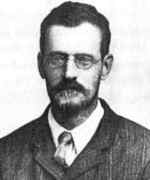Person: Rogers, Leonard

Leonard James Rogers was an English mathematician who is best known for what are now called the Rogers-Ramanujan identities.
Mathematical Profile (Excerpt):
- Mr J Griffith, of Jesus College, himself a well-known Oxford mathematician with a strong interest in elliptic functions, noticed Rogers' marked mathematical ability, and taught him during his boyhood.
- Rogers was a man of extraordinary gifts in many fields, and everything he did, he did well.
- Rogers is now remembered for a remarkable set of identities which are special cases of results which he had published in 1894.
- Such names as Rogers-Ramanujan identities, Rogers-Ramanujan continued fractions and Rogers transformations are known in the theory of partitions, combinatorics and hypergeometric series.
- The Rogers-Ramanujan identities were discovered in the papers On the expansion of some infinite products, Lond.
- They were found first in 1894 by Rogers, a mathematician of great talent but comparatively little reputation, now remembered mainly from Ramanujan's rediscovery of his work.
- Rogers was a fine analyst, whose gifts were, on a smaller scale, not unlike Ramanujan's; but no one paid much attention to anything he did, and the particular paper in which he proved the formulae was quite neglected.
- In that year Ramanujan, looking through old volumes of the Proceedings of the London Mathematical Society, came accidentally across Rogers's paper.
- A correspondence followed in the course of which Rogers was led to a considerable simplification of his original proof.
- The above neglect can be gauged by the fact that in 1936 the future Fields Medallist, Atle Selberg, published a "generalization" of the Rogers-Ramanujan identities which turned out, in fact, to be another special case of Rogers' original result.
- The Rogers inequality was proved in 1888 in his paper An extension of a certain theorem in inequalities, Messenger of Math.
- Hölder even made clear that he was indebted to a paper of Rogers by referring to it.
- However, it should be called the Rogers inequality or Rogers-Hölder-Riesz inequality or, at least, Rogers-Hölder or Hölder-Rogers inequality (cf.
- Rogers published over thirty papers in mathematics.
Born 30 March 1862, Oxford, England. Died 12 September 1933, Oxford, England.
View full biography at MacTutor
Tags relevant for this person:
Origin England
Thank you to the contributors under CC BY-SA 4.0! 

- Github:
-

- non-Github:
- @Lech-Maligranda
References
Adapted from other CC BY-SA 4.0 Sources:
- O’Connor, John J; Robertson, Edmund F: MacTutor History of Mathematics Archive
